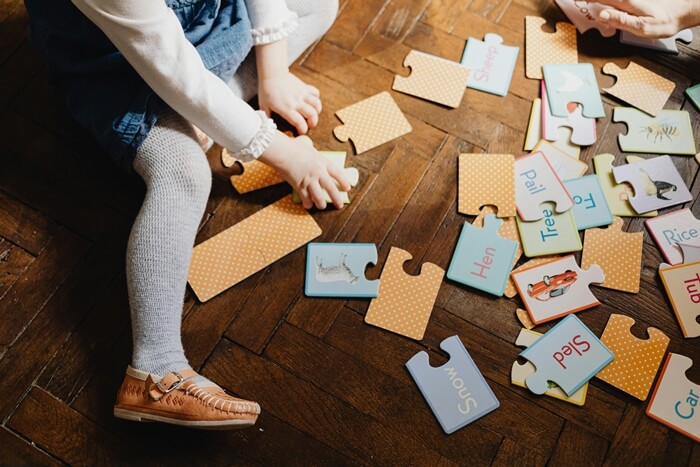Emotional intelligence (EI) is a critical skill that helps children navigate life with empathy, resilience, and self-awareness. It involves understanding one’s own emotions, recognising the emotions of others, and using this awareness to manage relationships effectively. Building emotional intelligence in children lays the foundation for healthy interpersonal skills, emotional resilience, and better conflict resolution abilities....
BlogHow to Build Emotional Intelligence in Children

Emotional intelligence (EI) is a critical skill that helps children navigate life with empathy, resilience, and self-awareness. It involves understanding one’s own emotions, recognising the emotions of others, and using this awareness to manage relationships effectively. Building emotional intelligence in children lays the foundation for healthy interpersonal skills, emotional resilience, and better conflict resolution abilities.
Emotional intelligence in children develops over time, influenced by their environment, parenting strategies, and emotional development stages. Nurturing this skill early ensures they grow into empathetic, well-rounded individuals capable of handling life’s challenges.
| Component of Emotional Intelligence | Definition | Example in Children |
| Self-Awareness | Recognising and understanding one’s own emotions | A child identifies they are feeling sad after losing a game |
| Empathy | Understanding and sharing the feelings of others | Comforting a friend who is upset |
| Self-Regulation | Managing emotions and reactions appropriately | Staying calm during a disagreement |
| Social Skills | Building healthy relationships through communication | Collaborating effectively in group activities |
Stages of Emotional Development in Children
Children’s emotional intelligence evolves through different stages. Parents and educators must provide age-appropriate guidance to foster growth at each phase.
- Infancy (0–2 years): Babies learn to express basic emotions like happiness and discomfort. Responsive caregiving builds trust and emotional security.
- Early Childhood (2–6 years): At this stage, children begin identifying emotions and understanding simple social norms. Teaching them words to describe feelings helps develop emotional vocabulary.
- Middle Childhood (7–12 years): Children start grasping complex emotions like pride or guilt. Encouraging empathy and conflict resolution skills becomes essential.
- Adolescence (13–18 years): Teens face heightened emotional experiences. Supporting them with active listening and promoting self-reflection fosters emotional resilience.
Fostering Emotional Intelligence Through Activities
Incorporating specific activities into daily routines can significantly enhance emotional intelligence in children.
| Activity | Objective | Method |
| Emotion Charades | Enhances recognition of emotions in others | Children act out emotions while peers guess |
| Storytelling with Reflection | Builds empathy and perspective-taking | Discuss how characters feel and why in a story |
| Journaling | Encourages self-awareness and emotional expression | Children write about their feelings or experiences |
| Collaborative Games | Develops social skills and teamwork | Games that require cooperation and problem-solving |
The Importance of Active Listening
Active listening is a cornerstone of emotional intelligence. Teaching children to focus on what others are saying, acknowledge their feelings, and respond thoughtfully helps them build stronger relationships. Parents and teachers can model active listening by giving undivided attention, asking open-ended questions, and validating the child’s emotions.
For instance, if a child is upset about losing a toy, instead of dismissing their feelings, acknowledge them by saying, “I understand that losing your toy makes you sad. Let’s see how we can fix this.”
Parenting Strategies for Emotional Growth
Parenting plays a pivotal role in shaping emotional intelligence. Positive reinforcement, empathy-driven communication, and creating a safe space for emotional expression are vital. Parents should avoid dismissing negative emotions; instead, guide children to process and manage them constructively.
Engaging in open conversations about feelings and demonstrating healthy emotional behaviours sets an example for children to follow. For instance, when parents share how they deal with frustration, children learn valuable coping mechanisms.
Teaching Conflict Resolution Skills
Conflict is a natural part of life, and teaching children to resolve disagreements respectfully is crucial. Encourage them to articulate their feelings, listen to others, and work towards finding mutually agreeable solutions. For example, if siblings argue over a toy, guide them to take turns or create a sharing schedule.
Building Emotional Resilience
Resilience allows children to recover from setbacks and adapt to challenges. Parents and educators can build emotional resilience by helping children view failures as opportunities to learn. Encouraging a growth mindset, where mistakes are seen as part of the learning process, empowers children to face adversity with confidence.
Fostering Kindness and Empathy
Acts of kindness strengthen emotional intelligence by teaching children to value and care for others. Activities like volunteering, helping classmates, or even small gestures like sharing lunch cultivate empathy. Reinforcing positive behaviours with praise further motivates children to practise kindness.
Building emotional intelligence in children requires consistent effort, understanding, and supportive environments. From recognising emotions and fostering empathy to teaching resilience and conflict resolution, every interaction is an opportunity to nurture these essential skills. By prioritising emotional development, parents and educators equip children with the tools to lead meaningful, fulfilling lives.